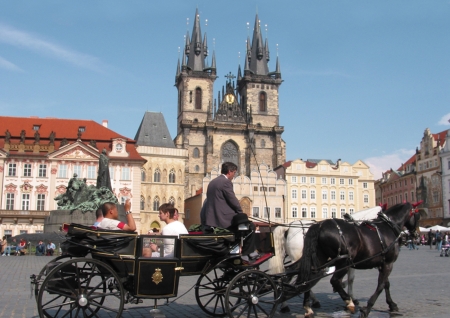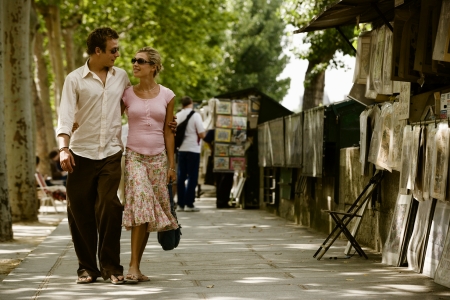Article
Where2 in Prague?
Published: Tue 21 Aug 2012 at 14:38
Updated: Tue 21 Aug 2012 at 14:39

Known as the ‘City of a Hundred Spires’, Prague is one of Europe’s most beautiful and cosmopolitan cities – and its compactness makes it a great winter break destination. Peter Ellegard explores what it has to offer.
Where2... for Exploring and Discovering?
Prague’s star turn is the picturepostcard Old Town Square, in the city’s UNESCO World Heritage-listed heart. The main attractions here are the Old Town Hall and Astronomical Clock, Tyn Church and Kinsky Palace, with the ornate Powder Tower nearby.
But it is also worth exploring the surrounding labyrinth of narrow, cobbled streets and passageways. Look up and marvel at the eclectic mix of baroque, rococo, Romanesque and Renaissance architecture of the Old Town buildings. There is something to delight the eye around every corner.
By January, the festive wooden stalls of the Old Town Square’s Christmas market have gone, and the throngs of tourists sipping beers and coffees outside pavement cafes around the square during the balmy summer months are a distant memory.
But wrap up warmly against the chilly winter temperatures and you can savour the square and other tourist hotspots in Prague with far fewer crowds than at other times of year. Snow brings an extra sparkle of magic.
Czech Republic capital Prague has 1.2 million inhabitants out of the country’s 10.3 million population. With its historic areas largely traffic-free, this is definitely a city to explore on foot. But you can also get around easily and cheaply by tram, bus, metro and taxi.
Where2... for Ancient History?
The city is dominated by Prague Castle, its top tourist attraction and the world’s largest ancient castle. Originally dating from the 9th Century, it has gone through several major reconstructions resulting in a mix of styles. Set on the other side of the temperamental Valtava River, it is the seat of the Czech president and has always been the political centre of city and state. Allow at least half a day to visit its many sights, including the towering gothic St Vitus Cathedral, Royal Palace, St George’s Basilica and the shops and galleries tucked into tiny 16th Century houses along picturesque Golden Lane.
Below the ramparts lie the beautifully preserved Lesser Town and 600-year-old Charles Bridge, which links the castle with the city’s historic heart. During warmer weather, the bridge is crowded with visitors, street entertainers, artists and traders. In winter, the statues of saints lining the bridge cast more solitary figures. The bridge leads across the river to the Jewish Quarter, otherwise known as Josefov, where the Old Jewish Cemetery, historic synagogues and Jewish Museum are among key sights, as well as to the Old Town.
The New Town includes Wenceslas Square, a shopping area famous for the pre-democracy rallies of the Velvet Revolution in 1989, which led to the resignation of the then Czechoslavakia’s Communist government and the eventual break-up of the Eastern Bloc. The country was split in two in 1993 to create the Czech Republic, with Prague remaining its capital, and Slovakia, with Bratislava as its capital.
Where2... for Famous Beer?
After venturing out in the cold by day, the best way to warm up is to hit one of Prague’s bars or brewpubs at night. The Czech Republic is famous for its beers (the town of Pilsen is the capital of the Czech beer industry, King Wenceslas first granting it brewing rights in 1295, while Ceske Budejovice is home to the Budvar Budweiser brewery) and you will find a ready selection in Prague’s bars. Among the oldest in the city are the Americky (American) Bar, in the basement of the ornate Municipal House in the Old Town, and the Na Slamniku pub adjacent to Stromovka Park where beer has been served for almost five centuries and which has a fireplace in winter. You can also catch live bands there. Newer establishments include Novomestsky Pivovar (The New Town Brewery), a brew pub and restaurant close to Wenceslas Square spread out across a complex of cellars and halls which opened in 1993.
Expect to find plenty of meat, potatoes and dumplings on menus offering traditional Czech fare in Prague restaurants. However, you will also find more imaginative dishes, along with international cuisine options. Beyond Prague there is a wealth of history, culture and unspoiled countryside to see on trips from the city. Half-day tours can take you into Central Bohemia, a region south west of Prague rich in history and castles. Mighty Karlstejn Castle, built in 1348 and just 30km from Prague, is the most-visited attraction outside Prague. Konopiste Castle is a huge Gothic pile rebuilt in 1887 by crown prince Franz Ferdinand, whose assassination in 1914 in Sarajevo led to World War I.
Opening hours for both are limited in winter, but alternative tours operate to the imposing Cesky Sternberk Castle. Pilsen and its brewery can be visited on a half-day.
But whatever you choose to do in Prague you will not fail to be captivated by this Central European wonderland.
Related articles

JetAway – Have the Inbetweeners finally grown up?
Wed 09 Jul 2014 | Where2 Magazine, Announcements

A Weekend in Paris
Wed 22 Aug 2012 | Where2 Magazine



